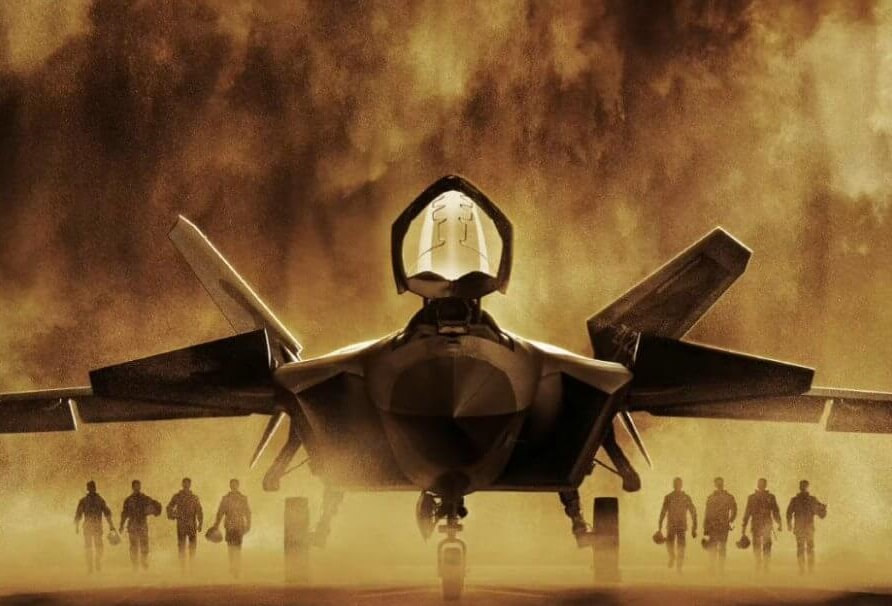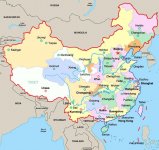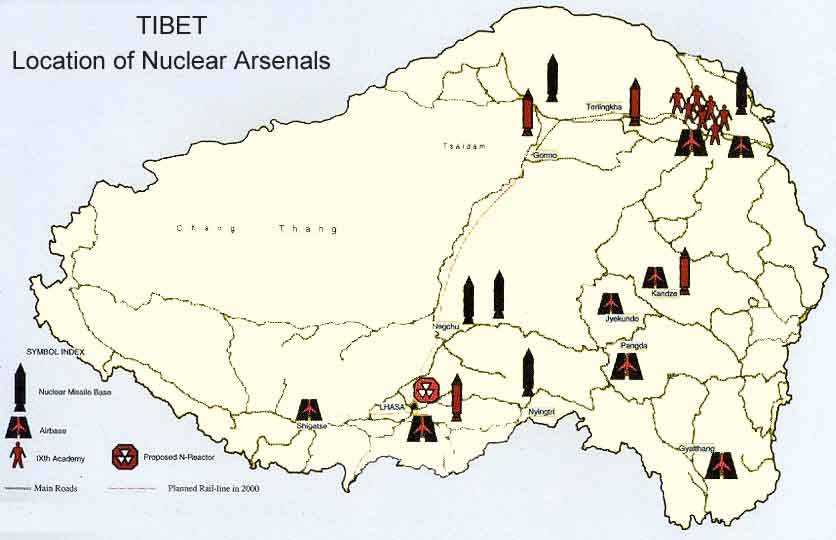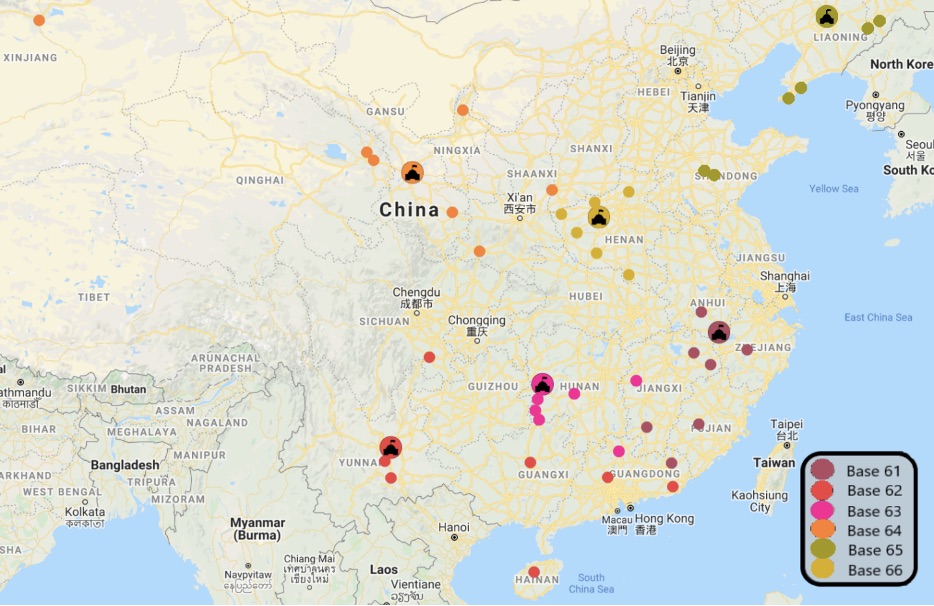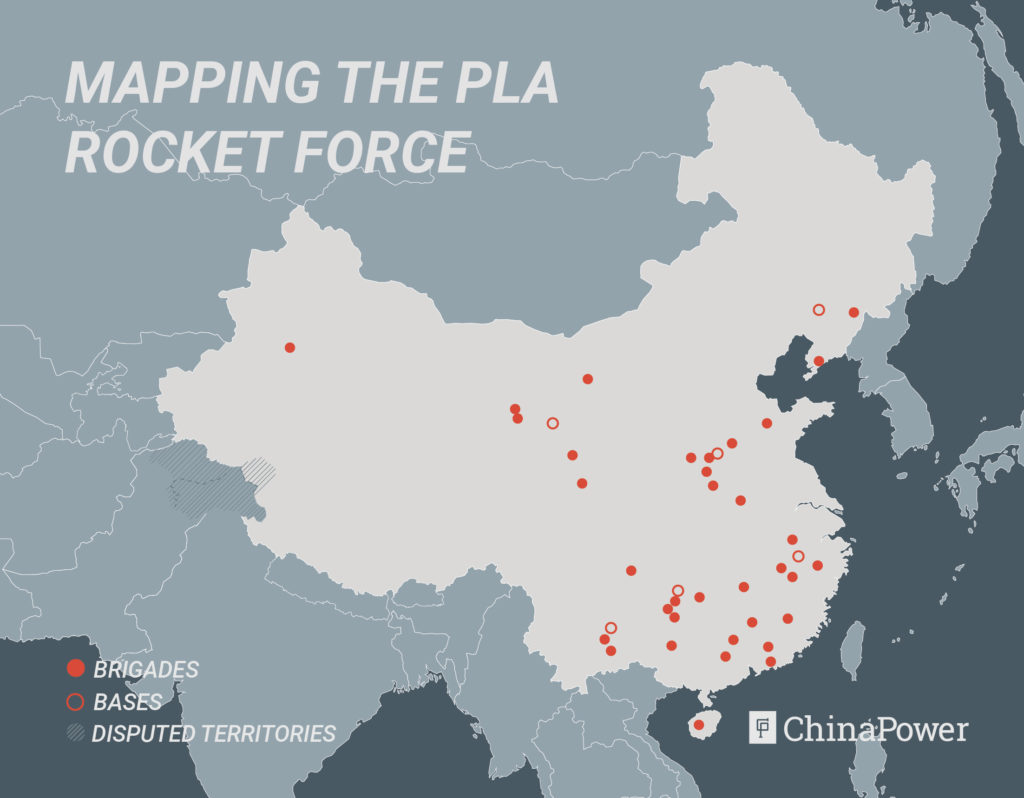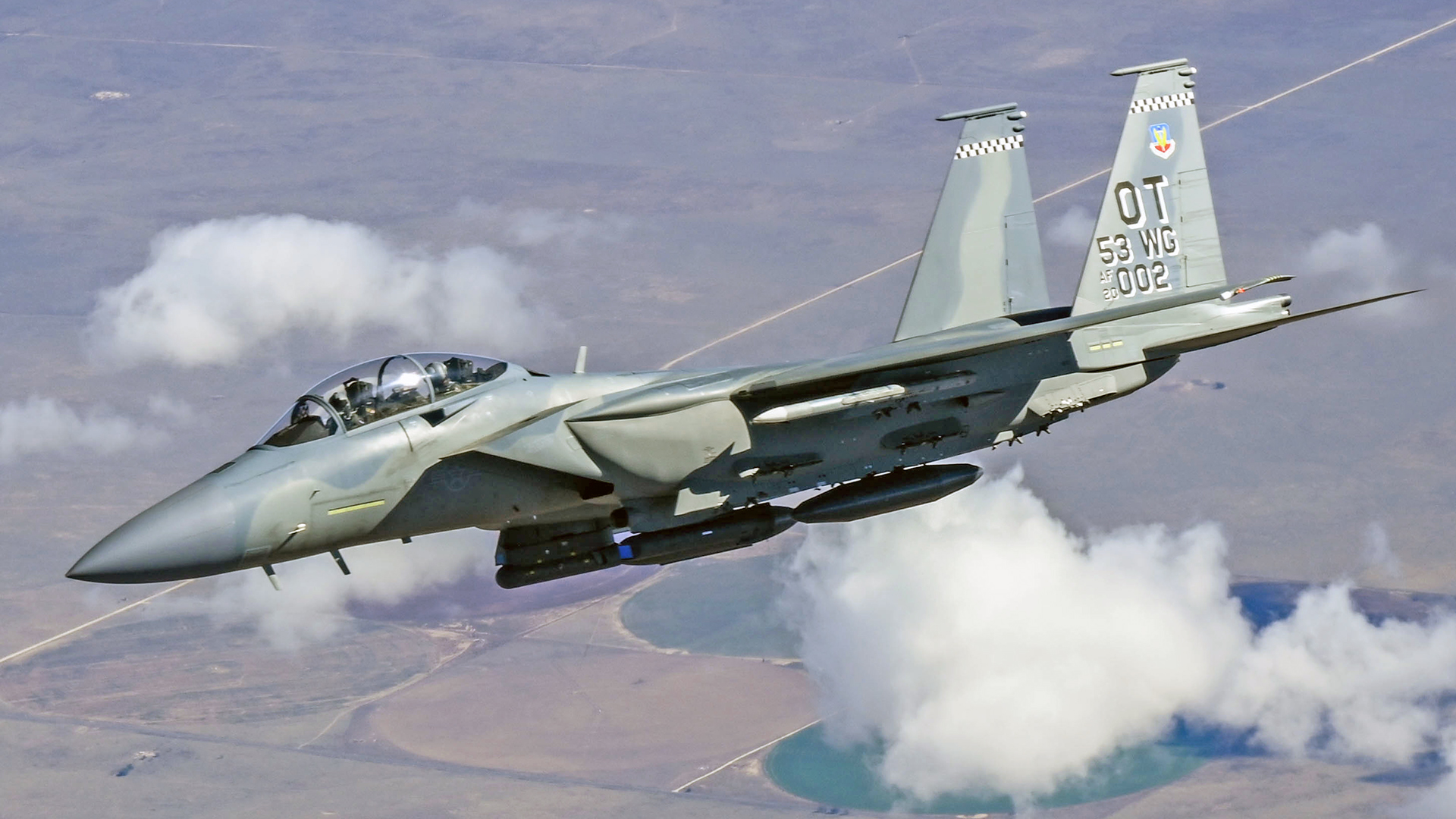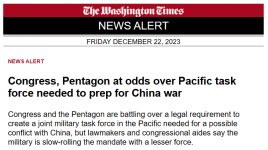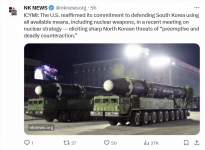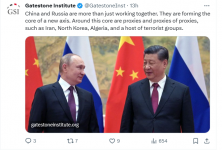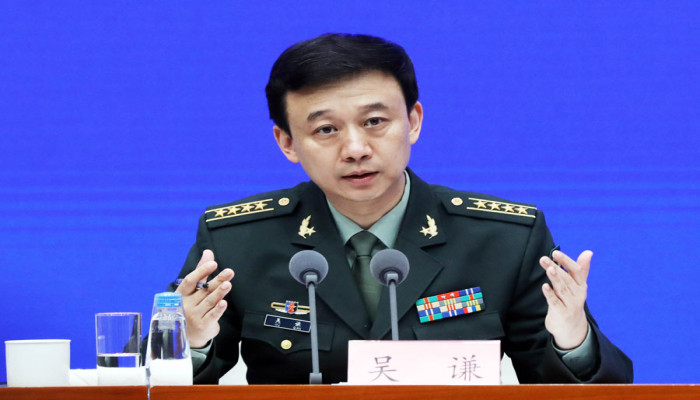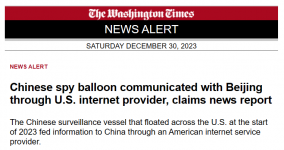Indo-Pacific News - Geo-Politics & Defense News
@IndoPac_Info
F-15EX Fighters To Be Based At Kadena Air Base In #Japan: Report
A total of 36 F-15EX Eagle IIs could be poised to reinstate a permanent fighter force at Kadena Air Base, Okinawa.
The U.S. Air Force may be poised to return F-15 Eagles to Kadena Air Base on the Japanese island of Okinawa, in the form of the service’s new F-15EX Eagle II. In the past, some officials had already campaigned for the F-15EX to be deployed to Kadena — which currently has no permanent U.S.
Air Force fighter presence — although questions around the planned numbers of Eagle IIs to be bought had raised concerns about the viability of the idea.
Nikkei Asia, the Japan-based news magazine, reported today that the Pentagon is planning to permanently deploy 36 F-15EX fighters at Kadena. The source of this information is said to be unnamed “congressional sources,” who Nikkei Asia says were briefed on the plan.
A total of 36 fighters at Kadena would represent a reduction of 25 percent compared to when the base last hosted a permanent U.S. Air Force fighter presence — in the form of 48 F-15C/Ds.
Those Eagles were flown by the 44th Fighter Squadron (FS) “Vampires” and the 67th FS “Fighting Cocks,” but, as we reported at the time, in October 2022 the Air Force decided to retire these aging jets, which had been in service for nearly 40 years.
A Kadena Eagle Sunset Celebration, to mark the end of the F-15C/D’s 44-year tenure on Okinawa, took place in April this year.
Without the permanently based F-15C/Ds, the U.S. Air Force began sending F-35, F-22, and other fighters to Kadena as part of a rotational force. This, however, was widely consideredto be a temporary gap-filling measure until a long-term plan for future posture would be devised.
It seems that the future posture has now been determined and it will involve the first and likely only overseas presence involving the new F-15EX.
Gen. Kenneth Wilsbach, commander of the U.S. Pacific Air Forces, also confirmed to Nikkei Asia that the rotational fighter force was likely to give way to permanently based fighters.
“I would not expect us to go with rotational forces in perpetuity,” Wilsbach said, although he did not say when the permanently based fighters might arrive in Japan.
Wilsbach also said he considered that Kadena “is becoming even more important,” due to its strategic Asia-Pacific location.
This would allow for a more rapid response to contingencies in the region involving China, with Wilsbach seeing this proximity to a potential aggressor as an advantage, rather than a disadvantage.
The latter argument comes from China’s increasing ability to strike targets — especially airbases and other critical military infrastructure — at short notice and using a growing variety of advanced weapons.
“If they’re shooting weapons at us at Kadena, then we could be projecting power from Kadena Air Base,” Kadena postulated.
Furthermore, using the Agile Combat Employment(ACE) concept, which is now regularly trained, the F-15EX fleet based there would use Kadena as a point from which to relocate to other, more dispersed locations in the region.
That would be hoped to be enough to escape a first wave of Chinese missile strikes, for example.
In the past, Wilsbach had specifically said he’d like to see the F-15EX at Kadena.
“What we intend to use it for there, if we’re so fortunate to get that replacement, is air superiority and some long-range weapons capabilities that you can conduct on the F-15EX,” Wilsbach explained at a Mitchell Institute for Aerospace Studies event in March 2022.
There’s also a persuasive argument to be made that, despite the reduction in numbers, the basing of 36 F-15EX jets at Kadena would bring some notable advances over the previous 48 F-15C/Ds.
Not only does the Eagle II boast a much more capable avionics suite, electronic warfare capability, and expanded weapons carriage — as well as potentially new and longer-reaching weapons — but these newer jets would also bring reduced maintenance demands.
It's very likely they would provide a similar — or better — overall readiness end strength compared to the 48 aging F-15C/Ds that previous called Kadena home.
Regardless of the numbers involved, having any kind of permanent fighter presence at Kadena would also offer significant benefits. To start with, rotational deployments are typically smaller.
By their nature, they don’t provide regional commanders with a fixed total of assets that they know they can call upon at any time, nor do squadrons that only operate temporarily from a base have the same kind of know-how as regards the local operating environment.
Furthermore, with the Air Force already struggling to meet even peacetime commitments with a fast-shrinking fighter force, rotational deployments further eat into resources.
There’s also the considerable weight of messaging behind a permanent fighter presence, as opposed to a rotational one, to any potential foe.
When the decision was taken to remove the F-15C/D from Kadena, it was reported that officials in both the Japanese government and the Pentagon voiced their worry that the move would “send a dangerous signal to China about deterrence.”
Another Eagle-related effort that could bolster that messaging is the planned basing of up to 12 Republic of Singapore Air Force (RSAF) F-15SG fighters at Andersen Air Force Base on the highly strategic island of Guam. While the Singaporean F-15s — broadly similar to the U.S. Air Force’s own Strike Eagles — would primarily be at Andersen to support RSAF training requirements, they would also have significant combat potential.
Andersen is another location over which there have been growing concerns over its vulnerability to enemy attack, especially from a peer state like China, something The War Zone has highlighted for years. But more recently there have been extensive efforts to expand and enhance its missile defense capabilities, in particular, as well as training to better survive an attack.
Adding RSAF Eagles to the island would further demonstrate resolve as well as a way of projecting additional airpower in the Asia-Pacific region.
Wilsbach also discussed another intriguing factor with Nikkei Asia, namely the forthcoming introduction of advanced uncrewed platforms that will work increasingly closely together with more traditional crewed fighters, employing high degrees of autonomy.
The U.S. Pacific Air Forces commander said that the Air Force was “absolutely” considering fielding its future Collaborative Combat Aircraft (CCA) drones at Kadena. Supplementing a reduced-size fleet of F-15s would likely be an ideal role for these assets, each of which is planned to cost between a quarter and a third of the current price of an F-35 stealth fighter. The Air Force plans to buy at least a thousand of these advanced uncrewed aircraft.
In our story that broke the news that the F-15X (now EX) was in the works, we laid out how it would be an ideal platform for drone control. The EX's two-person cockpit, wide-area displays, networking, easy adaptability, and long range makes it an ideal candidate to make the most out of what loyal wingmen drones can offer.
Certainly, the potential for CCAs to be based at locations other than Kadena but then to work in close concert with the Okinawa F-15EX fleet would provide an enticing new capability which, as Wilsbach said, would “complicate the battlespace and create chaos for your adversary.” However, the introduction of CCAs is not expected to happen until the end of this decade.
For all its undoubted potential, there have long been questions about just how many F-15EX aircraft the U.S. Air Force will actually procure.
Back when the Air Force said it would only buy around 80 of the jets, The War Zone explored the many pitfalls of a truncated Eagle II purchase and also addressed the logic of bringing some of them to Kadena.
More recently, we returned to the topic, with the Air Force now planning to acquire 104 F-15EX aircraft, down from an originally planned minimum fleet size of at least 144.
It’s also worth noting that getting the F-15EX to Kadena might also take some time. So far, only a handful of the jets have been completed, for test work, with the first example for an operational unit, the 142nd Fighter Wing, not due to be delivered until early next year.
One of the takeaways from our most recent analysis was the question surrounding what the Air Force plans to do with roughly two squadrons’ worth of Eagle IIs, after allocating 18 jets to each of three Air National Guard units already earmarked for the type.
At the same time, at least some of the six test jets are likely to remain in that capacity and additional jets will be required to support the merged F-15E/EX training enterprise.
As we wrote back in September, reinforcing our original conclusions, “One option would be for the balance of the planned F-15EX acquisitions to head out to the Pacific to join Gen. Wilsbach’s PACAF.”
If this latest report turns out to be correct, then it looks like The War Zone’s prediction — and Wilsbach’s wish — of Eagle IIs bedding down at Kadena could well be about to come true.
Contact the author:
thomas@thedrive.com
A total of 36 F-15EX Eagle IIs could be poised to reinstate a permanent fighter force at Kadena Air Base, Okinawa.

thedrive.com


